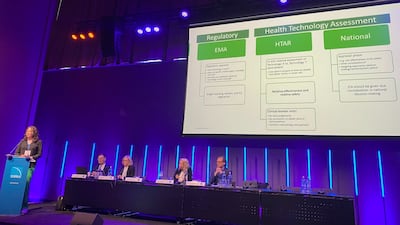EU-level joint clinical assessments (JCAs), which will apply for advanced therapies and oncology products from January 2025 under the HTA Regulation ((EU) 2021/2282), will require companies to answer questions in their dossiers known as PICOs (population, intervention, comparator, outcomes).

EU HTA Regulation: ‘We Don’t Want An Empty Dossier,’ Warns Coordination Group
Manufacturers that do not answer all questions they are asked during joint clinical assessments under the upcoming EU HTA Regulation could have their applications deemed incomplete, says a co-chair of the JCA subgroup.

More from TOPRA
Manufacturers that do not answer all questions they are asked during joint clinical assessments under the upcoming EU HTA Regulation could have their applications deemed incomplete, says a co-chair of the JCA subgroup.
The European Medicines Agency is mulling how best to involve experts in its decision-making processes while avoiding potential conflicts of interest, says executive director Emer Cooke.
US and EU regulators have invited two companies to work with them on a pilot scheme for assessing drugs for rare genetic diseases, a move that the European Medicines Agency’s Emer Cooke said would help improve “global alignment.”
Lack of early patient involvement in trial design can lead to burdensome studies, inappropriate endpoints, and in some cases clinical failure, delegates heard at a recent regulatory meeting.
More from Conferences
Sponsors should review longstanding agency concepts on consumer-friendly language and claims limitations, along with Office of Prescription Drug Promotion research and enforcement, when applying the 2018 CFL guidance to direct-to-consumer advertising, Sidley Austin’s Cope says.
Center for Biologics Evaluation and Research Director Peter Marks expects no fundamental changes in support for FDA initiatives and said the Rare Disease Innovation Hub, which promotes cross-center collaboration, is “consistent with what we're hearing in the current environment.”
Sponsors should consider the DTC ad's audio as the major statement about a prescription drug’s side effects and then choose strategically how to display the accompanying text. TV ads are now employing banners and larger text to satisfy the rule’s “dual modality” requirement.






